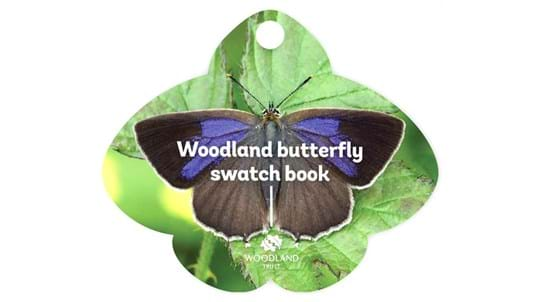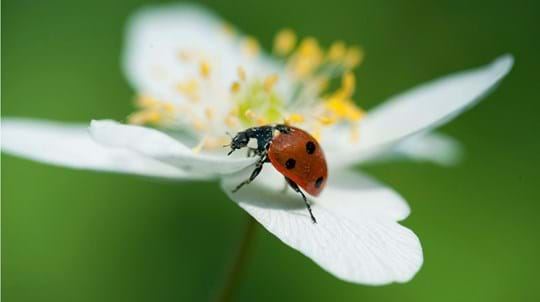
Credit: Gillian Pullinger / WTML
What do orange-tip butterflies eat?
Caterpillars: eat cuckooflower and garlic mustard. They are also cannibalistic, sometimes eating the eggs of unhatched orange-tips.
Adults: feed on nectar.
Subtle, delicate and well-disguised – that is until the male flashes a splash of bright orange. Orange-tips are a butterfly of grassland and woodland edges.
Common name: orange-tip
Scientific name: Anthocharis cardamines
Family: Pieridae
Habitat: woodland, hedgerows, parks and gardens
Caterpillar foodplants: cuckooflower, garlic mustard
Predators: birds
Origin: native
Caterpillars: pale orange at first, becoming blue-green with a white line down each side. They are very difficult to spot.
Adults: the upper sides of the wings are white. Males have orange-tipped forewings and females have small black tips. Both have a black spot. The wing underside has a mottled green pattern.
Wingspan: 4-5cm.
Not to be confused with: green-veined whites or small white butterflies.

Credit: Gillian Pullinger / WTML
Caterpillars: eat cuckooflower and garlic mustard. They are also cannibalistic, sometimes eating the eggs of unhatched orange-tips.
Adults: feed on nectar.
Historical names for the orange-tip include lady of the woods, prince of orange and the white marbled butterfly.
The female usually lays a single brood of eggs each year, but if spring starts early enough, there may be a small second brood. The caterpillars hatch on the developing seed pods of cuckooflower and garlic mustard.
After going through several instars (growth between moulting) and pupation by July, orange-tip butterflies leave their chrysalis at the start of spring. They are one of the earliest butterflies to appear which did not overwinter as adults.

Credit: Tony Cox / WTML
Orange-tip butterflies can be found across the UK, excluding some northern areas of Scotland. Those found in Ireland and on the Isle of Man are a distinct subspecies (Hibernica) to those of mainland Britain (Britannica).
When the butterfly is resting, the marbled colouration of the underwing acts as camouflage.
Look out for them flying along woodland rides, hedgerows, meadows, flowering verges or riverbanks as well as in gardens. You have a great chance of spotting one at one of the UK’s largest unimproved grasslands at Tring Park.

Credit: Ian Johnston / Alamy Stock Photo
The UK’s orange-tip population is doing well, and in recent decades has even increased its range across Scotland. It is not currently a species of conservation concern.

Shop
Learn to identify different butterflies with our handy guide. It's perfect for tucking into your pocket on a woodland walk.
External link

Nature's Calendar
Have you seen the first ladybird of the year or the last swallow of summer? Tell us about the nature near you and help scientists track the effects of climate change on wildlife.
External link